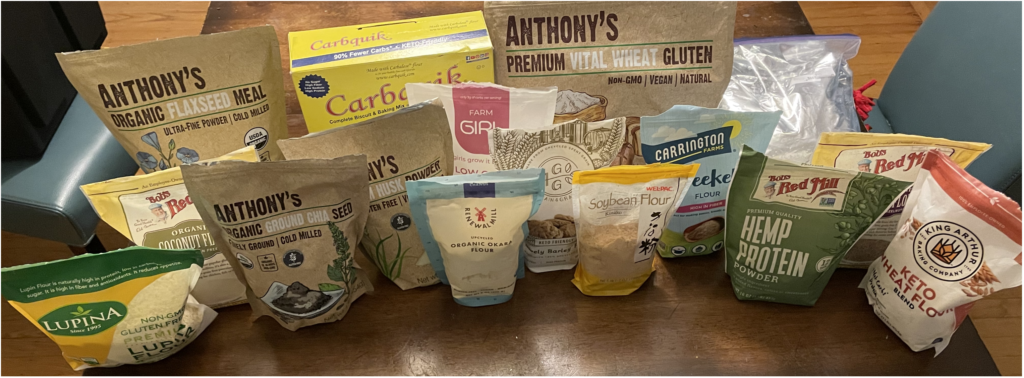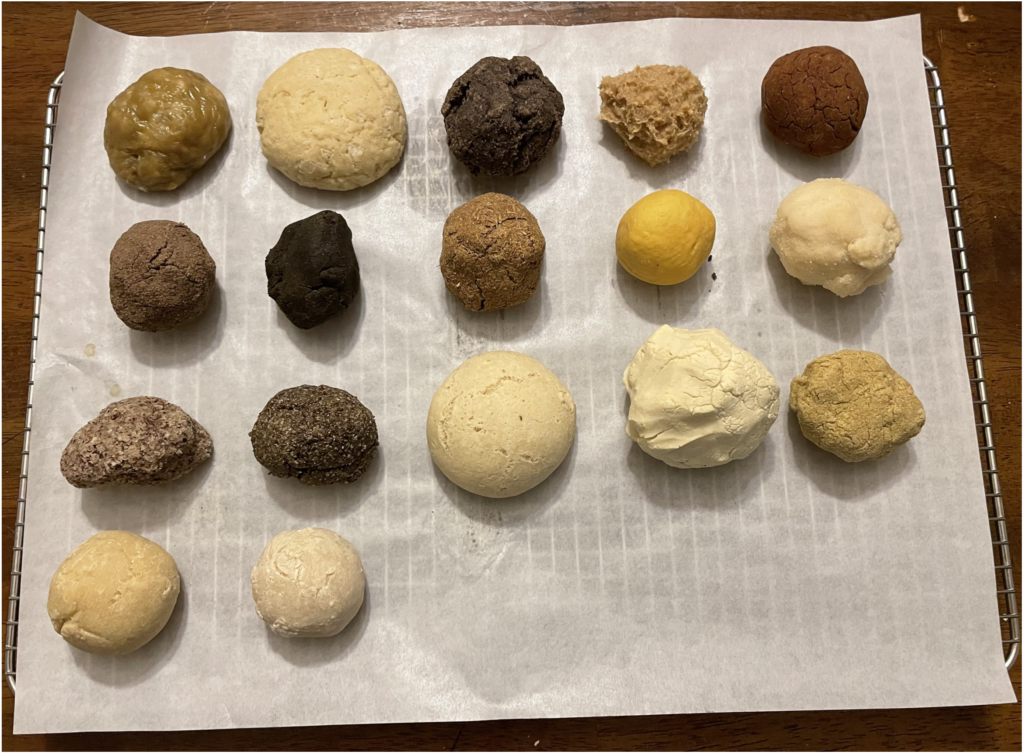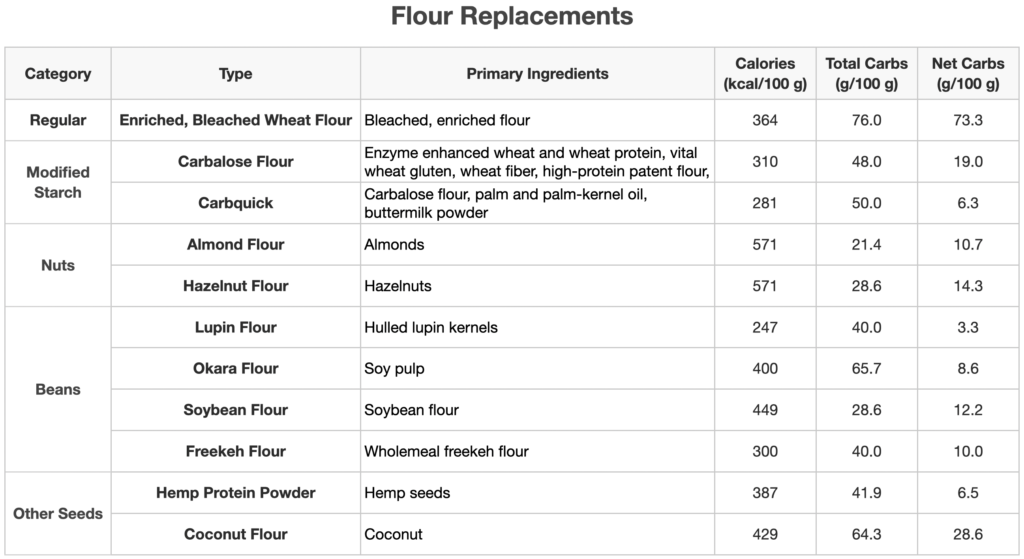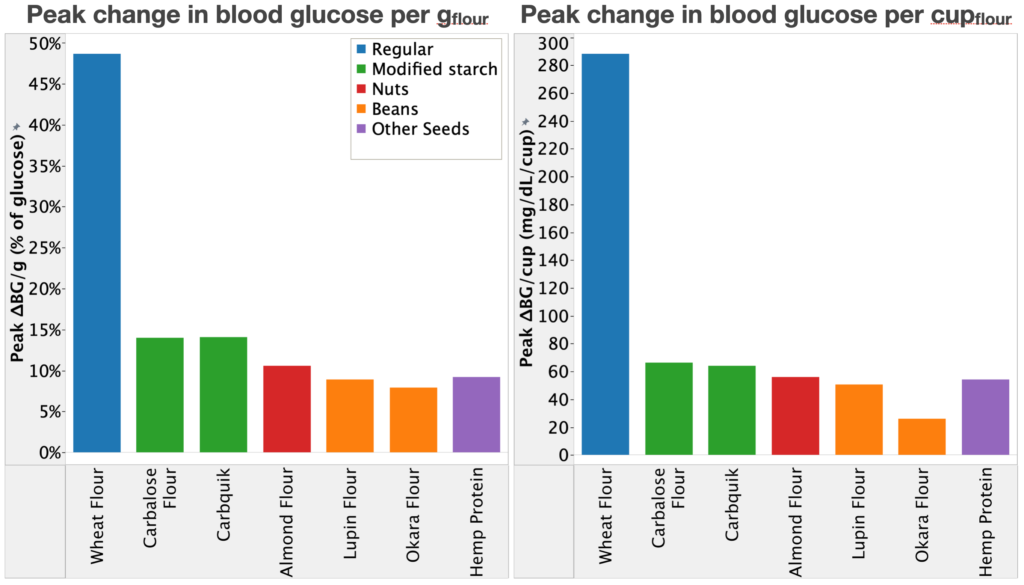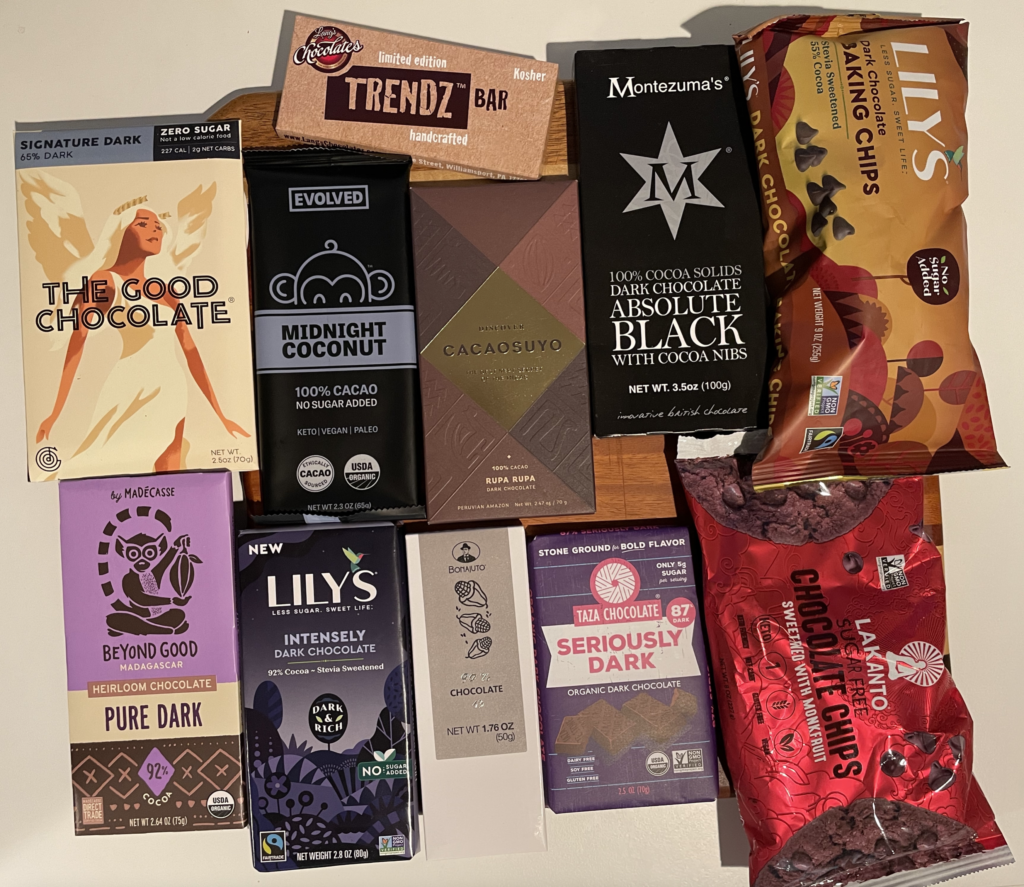Get new posts by email or rss feed
This post is an update on my experiments measuring the effect of low-carb foods and dietary supplements on blood sugar.
I’m still working my way through whole foods, but it’s going to take a while to get through them all.
In the meantime, I wanted to share my preliminary results and see if anyone has suggestions/requests for what I should include.
If you have any whole foods you like or would like to see tested, please post it in the comments or send me a PM.
Testing Queue:
- Prepared foods:
- Tortillas: Reported
- Cereal: Reported
- Ice Cream: Reported
- Bread: Reported
- Meal replacements: in queue, (Ketochow reported)
- Chocolate: Reported
- Ingredients:
- Supplements:
- Vinegar: Initial replication, more experiments in queue
- MSG: Reported
Whole Foods
For the last several months I’ve been testing the blood glucose impact of tons of different low-carb prepared foods and ingredients. While those tests have been very informative and uncovered a number of surprises (especially around what fibers do/don’t impact my blood glucose), most of what I eat is food I prepare myself using regular meats, vegetables, nuts, and seeds.
Given that I wanted to test the blood glucose impact of regular foods and see how it compares to the macronutrients (total carbs, net carbs, protein, etc.). Towards that end, I’m going to test as many low-carb foods as I can, then see if I can determine any consistent trends.
So far, I’ve tested 15 foods from 4 categories:
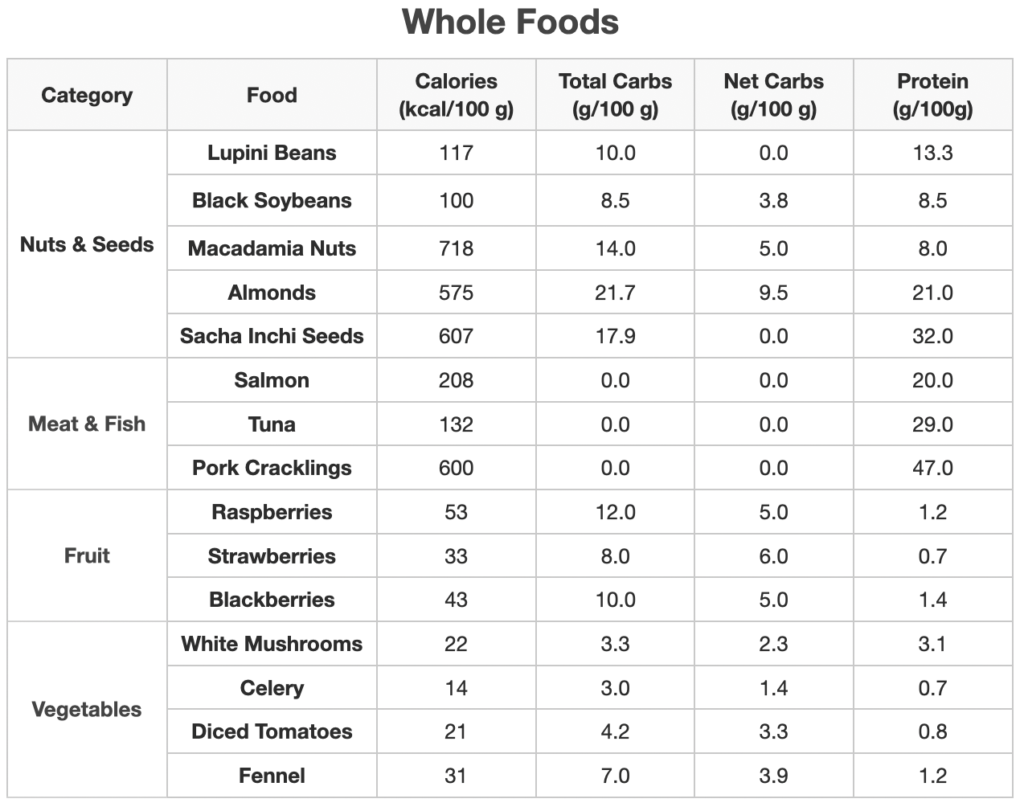
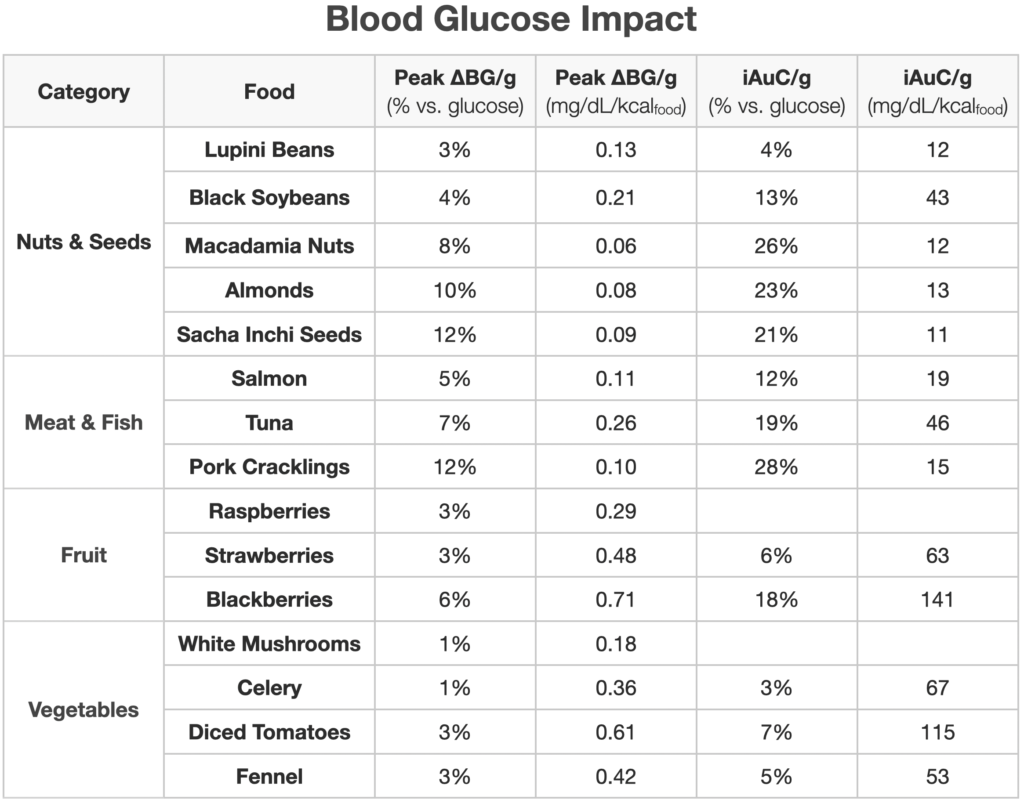
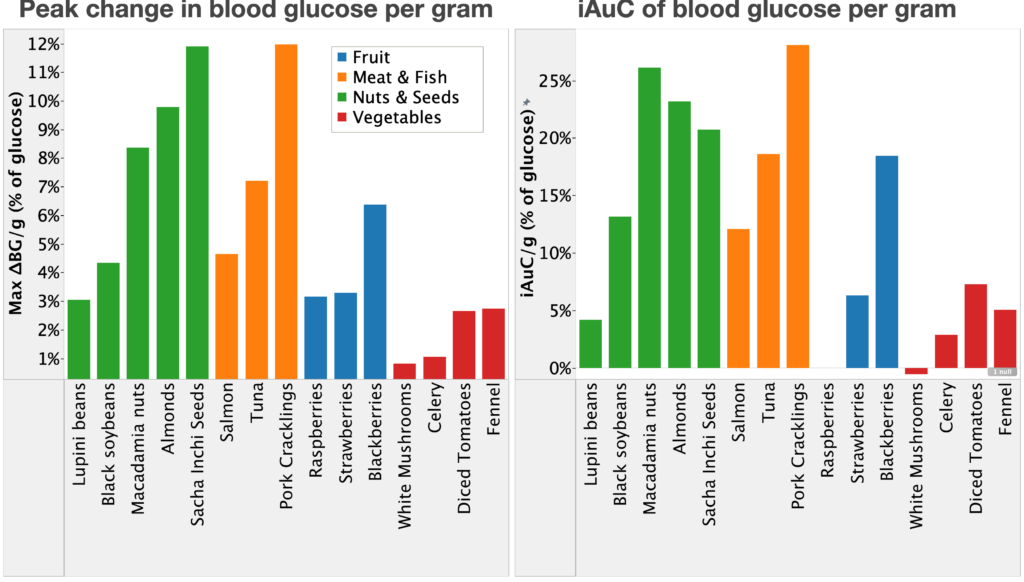
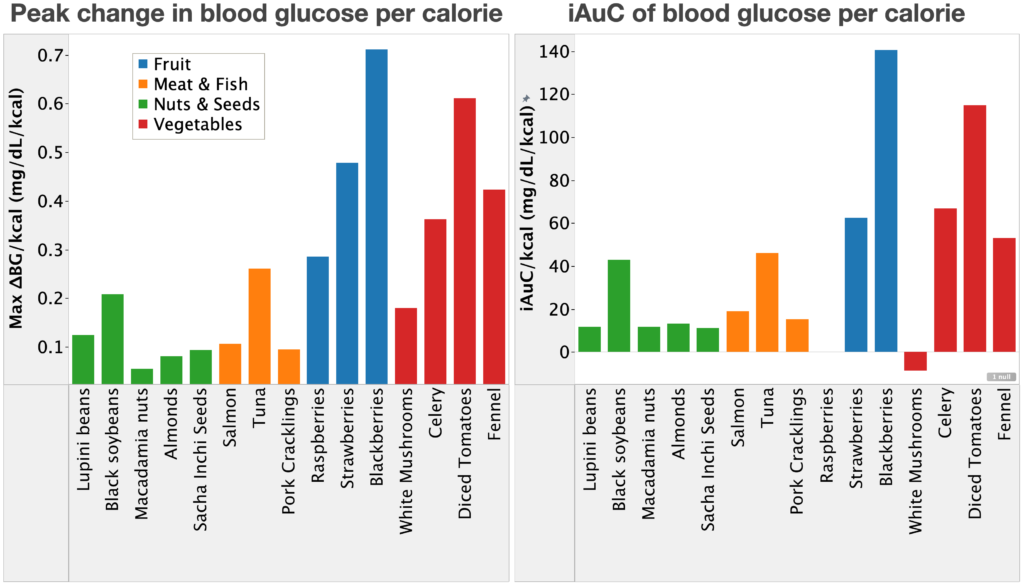
The initial results have been pretty interesting. Here are the key insights:
- All foods tested so far we very low BG impact, so the nutrition labels must be accurate and all of the fibers must be relatively indigestible.
- The vegetables were the lowest impact per gram, largely due to being such a high percentage water. I was really shocked by how much I could eat (250g mushrooms, 434g celery).
- If you look at BG impact per calorie, of course, then trend flips around with meat, fish, and nuts having much lower impact than vegetables.
- I was also pleasantly surprised by how much I could eat of the lowest carb fruits. Raspberries, blackberries, and strawberries were pretty similar to meats on a per gram basis (though not per calorie). I think I’ll start trying adding some in to recipes in small quantities.
- The zero carb foods (lupini, sacha inchi, salmon, tuna, pork cracklings) still had a noticeable BG impact, presumably coming from the protein content. Once I have more data, I’ll try to fit a model for BG impact as a function of carbs, protein, and fat. It will be interesting to see if there are any interaction effects.
As mentioned above, there’s some many different foods to test, it’s going to take me a while to get a comprehensive set tested. Once I do, I’ll post a full update with a more detail analysis.
In the meantime, since I’ve gotten such great recommendations from the readers, I wanted to solicit suggestions for additional foods to add to this study.
If you have any whole foods you like or would like to see tested, please post it in the comments or send me a PM.
I’ll test all the requests over the next couple weeks and post the results.
– QD
